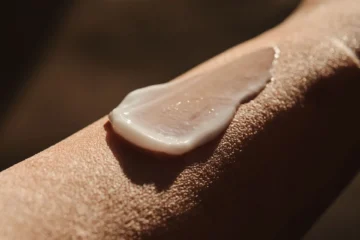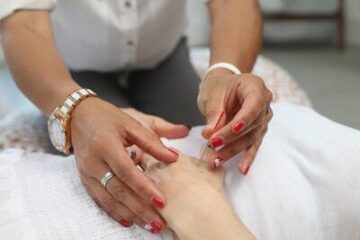Introduction
Hair loss is a common concern, affecting both physical appearance and emotional well-being. Genetic factors, hormonal imbalances, and medical conditions contribute to hair thinning and baldness. Understanding the cause is crucial for effective treatment. Consulting professionals and exploring diverse options, from medications to surgery and holistic approaches, can restore hair and confidence. Addressing hair loss proactively improves hair density and self-esteem.
Causes of Hair Loss
Before diving into the various treatment options, it’s essential to understand the underlying causes of hair loss. Genetics play a significant role, with conditions like male and female pattern baldness being hereditary. Hormonal imbalances, such as those occurring during pregnancy or menopause, can also contribute to hair loss. Additionally, medical conditions like thyroid disorders, autoimmune diseases, and scalp infections can lead to hair thinning or bald patches. In Sydney hair transplant procedures are among the advanced treatments available to address hair loss comprehensively.
Non-Surgical Hair Loss Treatments
Medications
Medications such as minoxidil (Rogaine) and finasteride (Propecia) are commonly prescribed to stimulate hair growth and prevent further loss. Minoxidil, available as a topical solution or foam, works by increasing blood flow to the scalp and prolonging the growth phase of hair follicles. Finasteride, taken orally, inhibits the production of dihydrotestosterone (DHT), a hormone linked to hair loss in men. While these medications can be effective for some individuals, it’s essential to discuss potential side effects and long-term use with a healthcare professional.
Laser Therapy
Low-level laser therapy (LLLT) involves the use of specialised devices to deliver low-energy laser light to the scalp. This non-invasive treatment stimulates cellular activity within hair follicles, promoting hair growth and improving hair density. Laser therapy can be performed at home with handheld devices or in clinical settings using larger, more powerful machines. While results may vary among individuals, many people experience noticeable improvements in hair growth and thickness with regular use of laser therapy.
Scalp Micropigmentation (SMP)
Scalp micropigmentation (SMP) is a non-surgical cosmetic procedure that involves tattooing tiny dots or lines onto the scalp to mimic the appearance of hair follicles. This technique is particularly beneficial for individuals with extensive hair loss or those who prefer a buzzed or shaved hairstyle. SMP can create the illusion of density and camouflage scars or thinning areas, providing a natural-looking solution for hair loss. The procedure is typically performed in multiple sessions to achieve desired results, and maintenance may be required every few years to maintain the appearance.
Surgical Hair Loss Treatments
Follicular Unit Extraction (FUE)
Follicular unit extraction (FUE) is a minimally invasive hair transplant technique that involves harvesting individual hair follicles from donor areas, usually the back or sides of the scalp, and transplanting them into recipient sites on the balding or thinning areas. FUE offers several advantages over traditional hair transplant methods, including minimal scarring, faster recovery times, and the ability to harvest grafts from various parts of the body. The procedure is performed under local anaesthesia, and patients can typically resume normal activities within a few days.
Follicular Unit Transplantation (FUT)
Follicular unit transplantation (FUT), also known as strip harvesting, involves removing a strip of scalp tissue from the donor area and dissecting it into individual follicular units for transplantation. The donor site is then sutured closed, leaving a linear scar that can be concealed by surrounding hair. FUT is suitable for individuals with larger areas of baldness or those who require a higher number of grafts. While the procedure may result in a more noticeable scar compared to FUE, advancements in surgical techniques and closure methods have minimised scarring and improved outcomes.
Robotic Hair Transplantation
Robotic hair transplantation utilises advanced technology and robotics to automate the process of harvesting and implanting hair follicles. This innovative approach offers precision and accuracy in graft extraction and placement, resulting in natural-looking results with minimal human intervention. The robotic system uses algorithms to select the best donor hairs for transplantation, ensuring optimal graft survival and distribution. While robotic hair transplantation may be more expensive than traditional methods, many patients appreciate the enhanced precision and efficiency it offers.
Natural Remedies for Hair Loss

Essential Oils
Essential oils such as rosemary, peppermint, and lavender are known for their hair growth-promoting properties. These oils contain compounds that stimulate blood circulation to the scalp, nourish hair follicles, and promote hair growth. Essential oils can be applied topically through scalp massages or added to hair care products like shampoos and conditioners. When using essential oils, it’s essential to dilute them properly and perform a patch test to avoid adverse reactions.
Scalp Massages
Scalp massages are a simple yet effective way to improve blood circulation to the scalp, stimulate hair follicles, and promote hair growth. Massaging the scalp with gentle pressure can help relax tense muscles, reduce stress levels, and increase nutrient delivery to the hair follicles. Scalp massages can be performed using fingertips, a scalp massaging device, or with the assistance of a professional massage therapist. Incorporating scalp massages into your hair care routine can not only promote hair growth but also provide a relaxing and enjoyable experience.
Nutritional Supplements
Nutritional supplements play a vital role in supporting overall hair health and preventing hair loss. Biotin, vitamin D, omega-3 fatty acids, and iron are among the essential nutrients that contribute to hair growth and strength. These nutrients can be obtained through a balanced diet consisting of fruits, vegetables, lean proteins, and whole grains. However, in some cases, supplementation may be necessary to ensure adequate intake, particularly for individuals with dietary restrictions or deficiencies. Before starting any nutritional supplements, it’s essential to consult with a healthcare professional to determine the appropriate dosage and suitability for your individual needs.
Lifestyle Changes for Hair Loss Prevention
Diet and Nutrition
A balanced diet rich in vitamins, minerals, and proteins is essential for supporting healthy hair growth and preventing hair loss. Foods high in vitamin A, vitamin C, biotin, and omega-3 fatty acids promote scalp health, strengthen hair follicles, and encourage hair growth. Incorporating nutrient-dense foods like leafy greens, nuts, seeds, eggs, and fatty fish into your diet can provide essential nutrients for optimal hair health. Additionally, staying hydrated by drinking plenty of water helps maintain scalp moisture and supports overall hair hydration.
Stress Management
Chronic stress can contribute to hair loss by disrupting the hair growth cycle and triggering conditions like telogen effluvium and alopecia areata. Therefore, managing stress levels is crucial for maintaining healthy hair and preventing excessive shedding. Engaging in stress-reducing activities such as meditation, yoga, deep breathing exercises, and mindfulness practices can help promote relaxation, reduce stress hormone levels, and support hair growth. Additionally, maintaining a healthy work-life balance, prioritising self-care, and seeking support from friends, family, or mental health professionals can further contribute to stress management and overall well-being.
Proper Hair Care Practices
Adopting proper hair care practices is essential for minimising damage, breakage, and hair loss. Gentle handling of hair, avoiding excessive heat styling, chemical treatments, and tight hairstyles can prevent hair follicle damage and breakage. Using sulphate-free shampoos and conditioners formulated for your hair type, avoiding overwashing, and incorporating nourishing hair masks and treatments into your routine can help maintain hair health and promote growth. Additionally, protecting hair from environmental damage by wearing hats or scarves outdoors and minimising exposure to harsh weather conditions can further support hair health and prevent damage.
Combining Treatments for Optimal Results
In many cases, a combination of treatments may be necessary to achieve optimal results. Consulting with a hair loss specialist can help individuals develop personalised treatment plans tailored to their specific needs and goals. By addressing multiple factors contributing to hair loss, individuals can maximise their chances of regaining a full and healthy head of hair.

Identifying the Most Effective Hair Loss Treatment
When evaluating Sydney hair loss treatment options, it’s essential to consider factors such as efficacy, safety, cost, and individual preferences. While some treatments may yield faster results, others may require more extended periods of use. Consulting with a healthcare professional can provide valuable insights and guidance in selecting the most suitable treatment option based on one’s unique circumstances and goals. Patient satisfaction rates and success stories can also provide valuable insights into the effectiveness of different treatments, helping individuals make informed decisions about their hair loss journey.
Conclusion
In conclusion, exploring different types of hair loss treatments is essential for identifying the most effective solutions. Whether opting for non-surgical interventions like medications and laser therapy, considering surgical procedures such as hair transplantation, or incorporating natural remedies and lifestyle changes, there are options available to address hair loss comprehensively. By taking proactive steps and seeking guidance from healthcare professionals, individuals can embark on a path towards restoring their hair and confidence, ultimately enhancing their overall well-being and quality of life.




